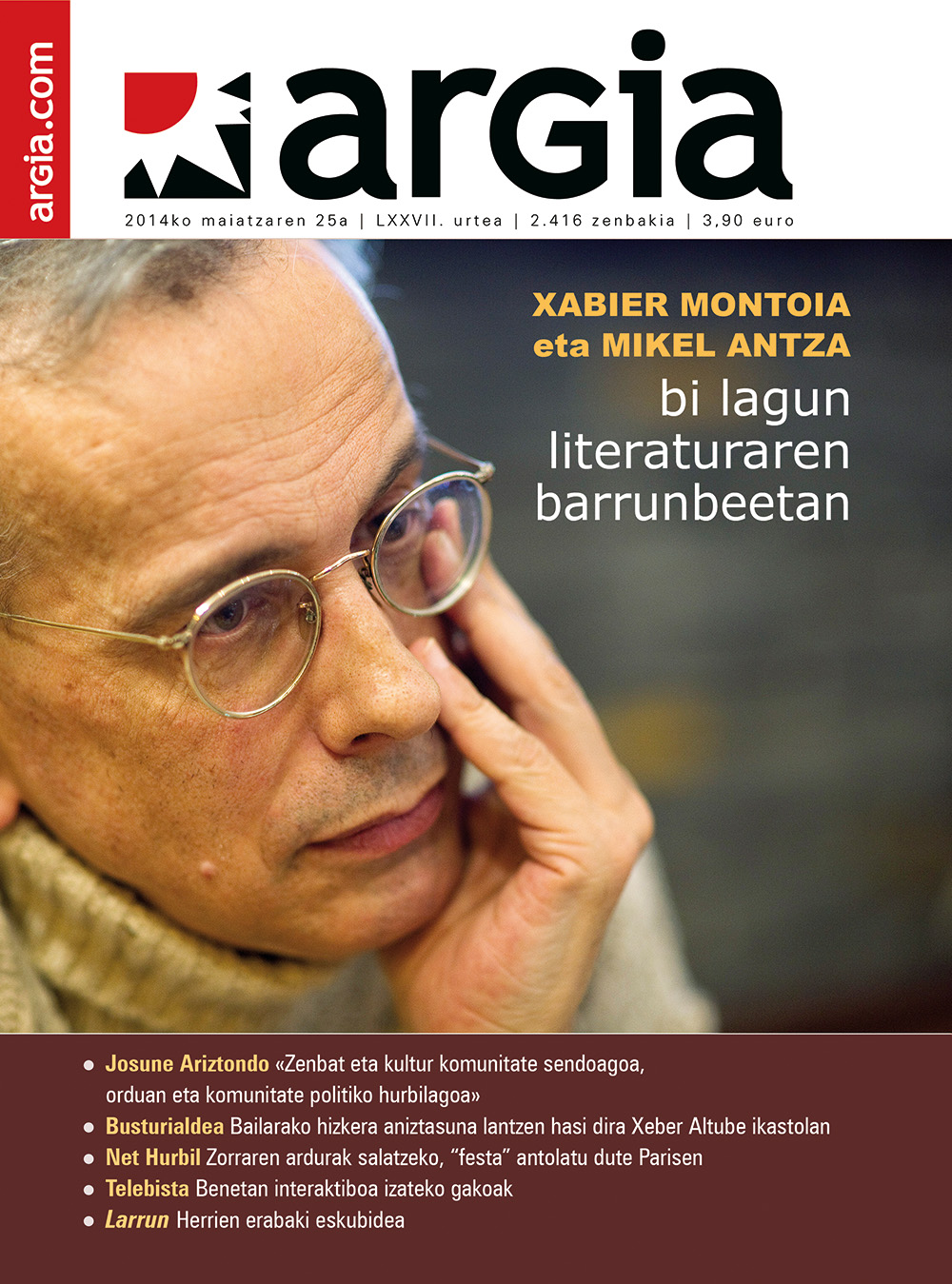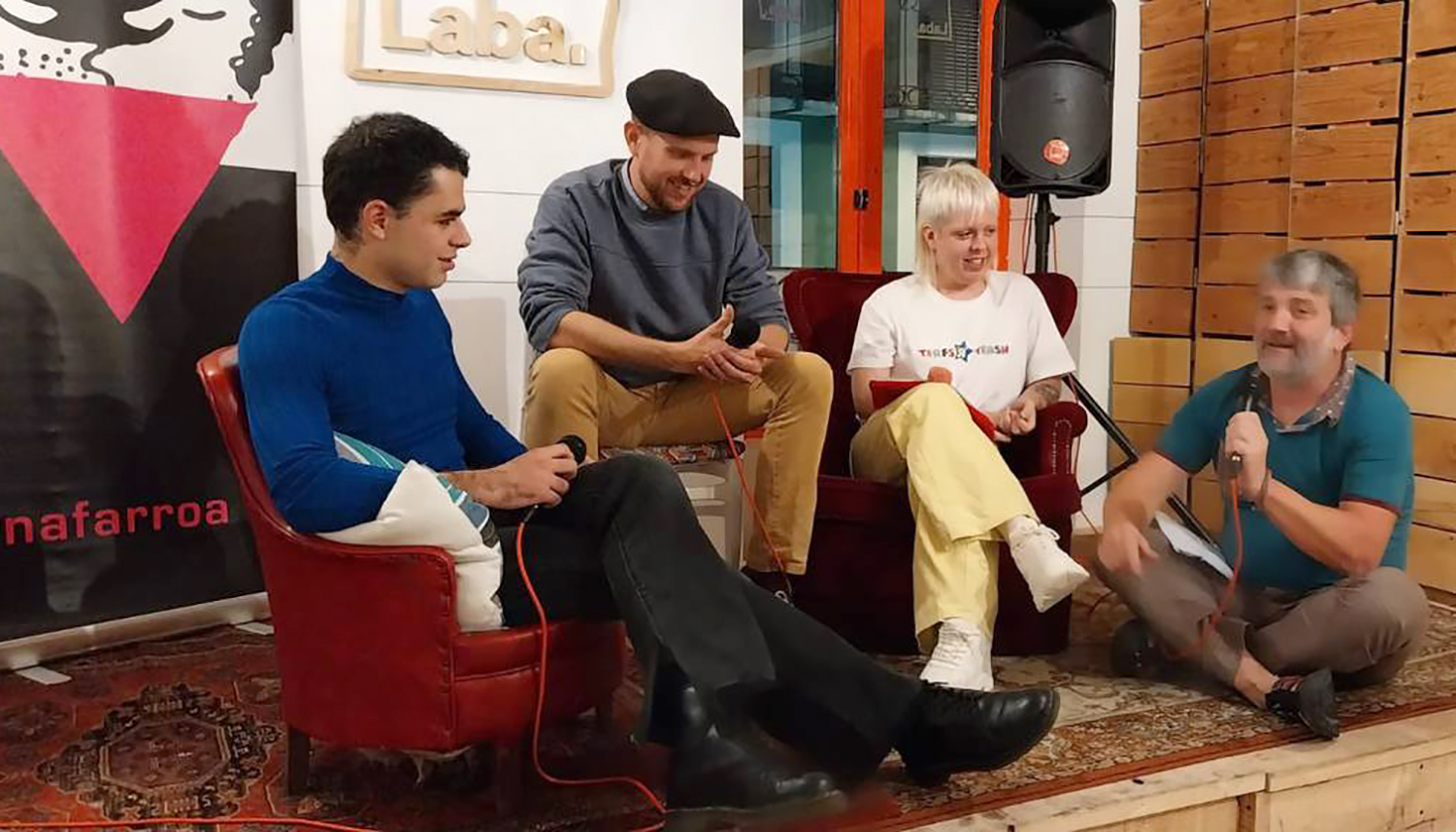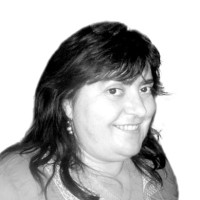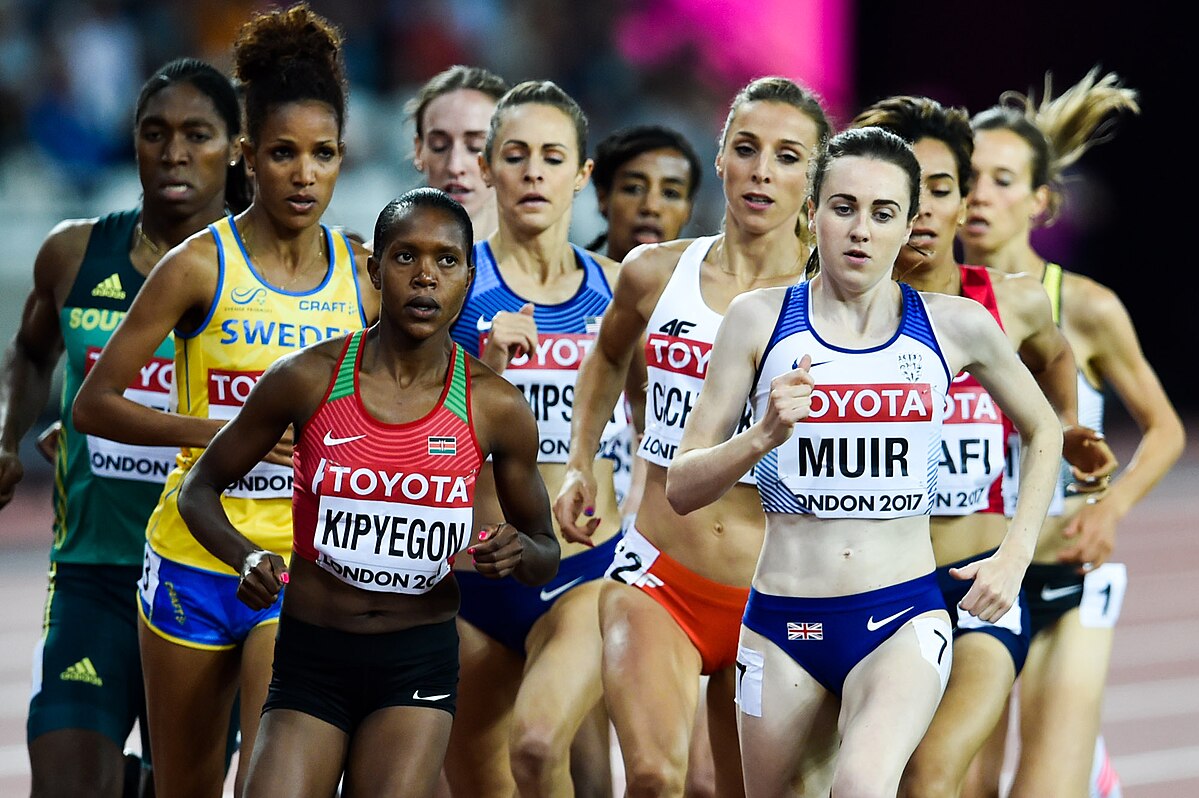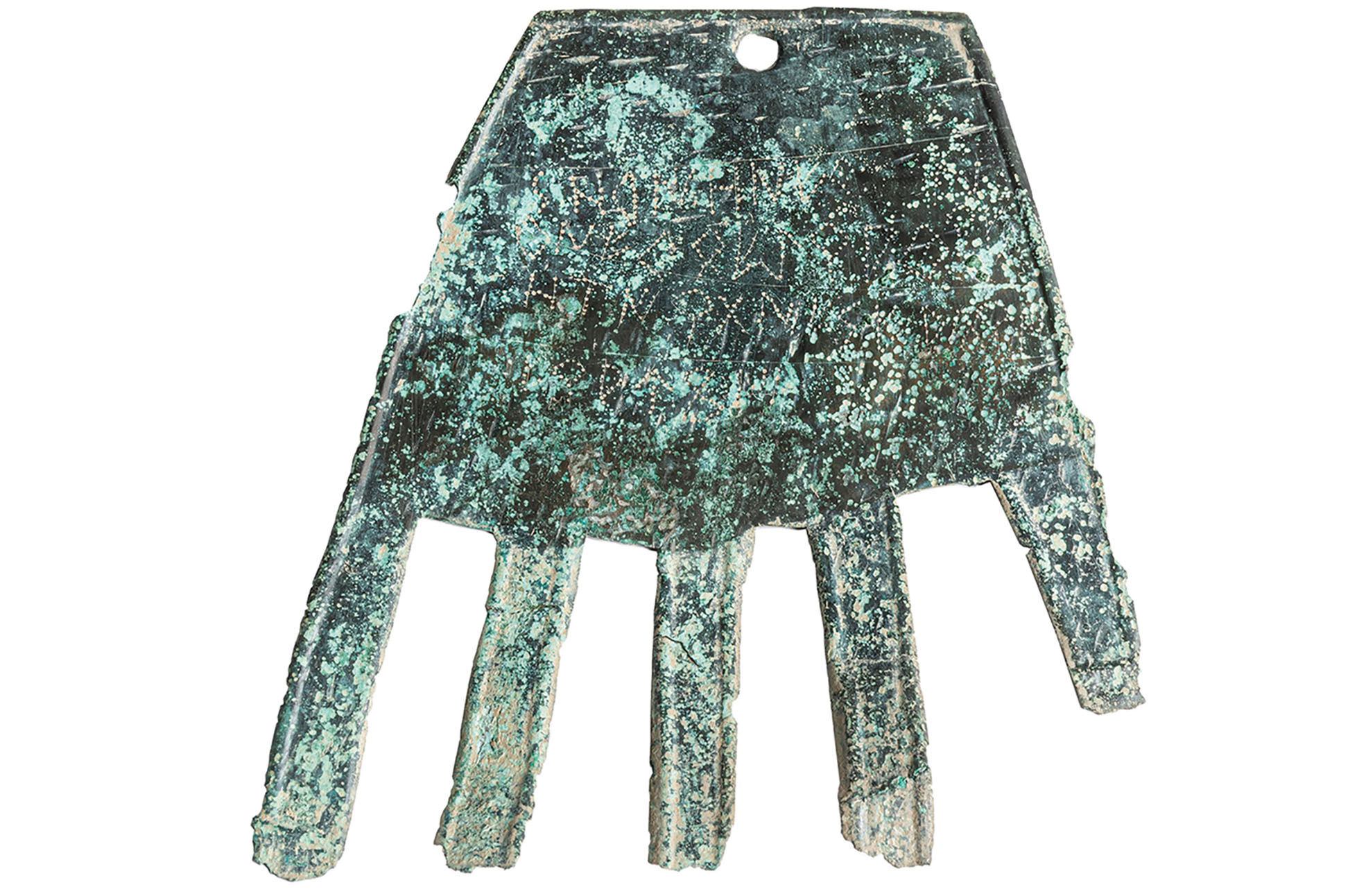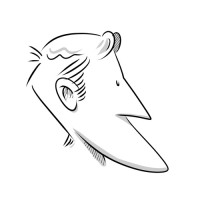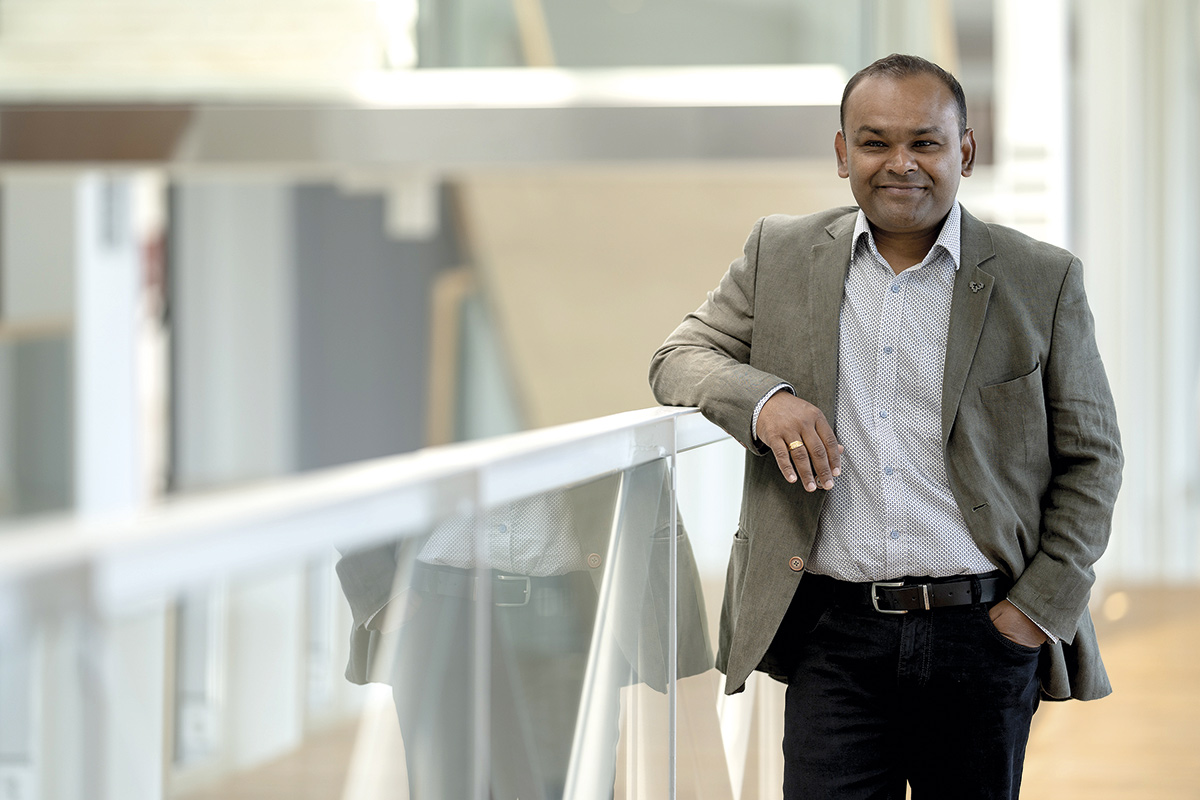"If we have problems with toponyms, it's because we also have problems in society."
- Old place names humbly speak to us.
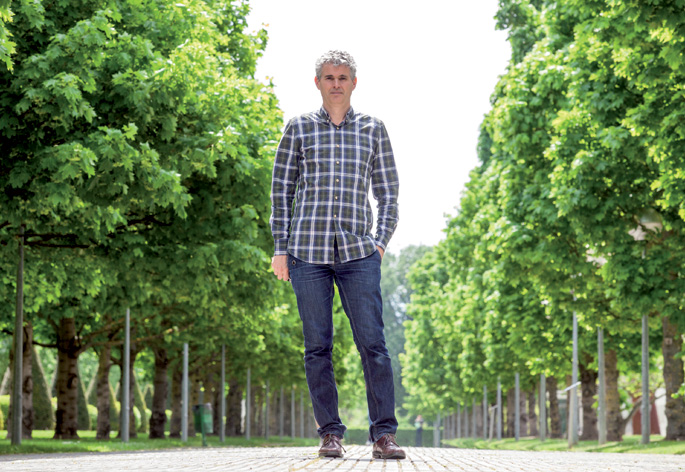
You are Euskaldun berri. When and how did you learn Basque?
When I was very young, when I was 14 years old, I started at the Euskaltegi Joan de Amendx in Pamplona. He was the youngest in the class. Todor Arburua, my grandmother's uncle, was the priest of Etxalar, a corresponding member of the Basque Language Academy, an award-winning writer in a literary competition from the City Council of Pamplona before the war and collector of the entire Etxalar toponymy. My amatxi, Felisa Almandoz, was the first champion of Pamplona before the war, so what I did was, somehow, regain the Basque family lost in the previous generation. However, I found out about everything when I started studying. What drove me into the Basque Country was a good friend.
How did the fondness for place names come about?
When I was 16, I really liked maps. Many times I would look at the most military, and then I would go out with the bicycle to see the sites on the maps. That's how I took names. At that time, I met historian José Mari Jimeno Jurio, who somehow marked my way. He was a very open man and immediately opened the doors of his house to me and others interested, leaving his papers on the table and encouraging me to investigate. In Eusko Ikaskuntza, a scholarship was created to study the toponymy of the Camino de Santiago. At the same time another group emerged to analyze the names of the places in Pamplona and I immersed myself fully in that environment. At the end of the career, in 1990 I entered the new collection project of the Little Toponymy of Navarra and there I was there for ten years. Paid by the Directorate General of Linguistic Policy and carried out by the public company Tracasa, it was possible to have 100,000 official names of Navarra and appear in the official cartography. The objective was to give practical value to these names by integrating them into official maps. The intention was fulfilled and has had a great influence in practice: 60 books were published and now all the information is available over the Internet. All of these names we got by going to all the villages and asking the elderly. If it had been done now, it would probably have been raised 20 percent less.
What does toponymy show?
1,000 years, 500 years of photographs are many place names. They show us what the landscape was like, what vegetation there was, whether or not there was a forest, what trades they had… and also things that have disappeared on many occasions, such as the oak forests in the north or the oak forests in the south. Some names are very dark, others are very clear, like the old names of San Miguel and other saints. It gives us a lot of linguistic information. From Tafalla to the north dominates toponymy based in Euskera and from there down, instead, romance. In many places there have been no writings in Basque and the only way left for us to know a little bit about the Basque country there is toponymy.
And also animal fingerprints.
The wolf is easy to perceive: Otsobi, Otsabide, Otsaran, Ottolilo, Otsate… The bear, on the other hand, not so much, because it is difficult to know when the name comes from the bear and when from the stone. When treating toponymy, it's always very important to see what's on the spot.
Now what do you have in your hands?
I am collecting names of houses with people from Valdizarbe and Mañeruibar. Before the end of the year we will publish a book that collects over 2,000 house names. In the 18th century these names appear very well documented, what happens is that, unlike Iparralde, there are many changes. The owner is more important than the house, and that's why those names don't last as long as those on the mountain. In 100 years, there's a lot of change.
On the other hand, I am working with UPNA professor Juan Carlos López Mugarza in the toponymy of the Pyrenees, promoted by the Andorran Government. Here, when you find a Basque toponym, you almost get the problem and there, however, you are looking forward to. It's curious. We are setting limits, because not everything is Basque. In any case, it is a satisfaction to see that the Basque Country is recognized in this type of research.
In the main toponymy, the names of the peoples of Navarra are in a good situation.
There's a real struggle with place-names. The names of Euskaldunes were formalized and used in the Basque area. In the rest of the areas, however, if the Basque name was to be made official, each people had to ask for it. When the peoples of the Vascophony area had two names, such as Doneztebe-Santesteban, they both became official. This was not given much importance, but the problems started when some municipalities in the mixed area approved the bilingual name, such as Estella-Lizarra or Asturias-Iruña, and the Government of Navarra issued a decree to prevent them from being used in this way, saying that this was accepted in the Vascophony area, but not in others.
However, some find it difficult to accept the Basque names. The Diario de Navarra, for example, always put Vera de Bidasoa until recently.
He too has surrendered and now uses the official names. However, there are very complicated cases. In Estella, for example, Estella-Lizarra was admitted as a unique name and the Supreme Court has given the City Hall the reason, so it is an indivisible whole and should always be used, although this formula is not widely used or practical.
And Pamplona or Iruña, how should we say?
The case of Pamplona is very notable: Iruña is the form used by the City Hall, the other is the one recommended by Euskaltzaindia. Pamplona does not exist officially anywhere. Pamplona is official, but the decline is made with Pamplona. It's crazy, and the use of one or the other shows almost your current ideological line. It would be best if I admitted them. Pamplona can be the brand of the city but also in the form of Pamplona. With Lumbier and Lumbier the same thing happens, they're fighting and because they don't agree, the only official name is Lumbier.
The presence of the Basque in the streets of Pamplona is decreasing.
The names of the rural centres are the responsibility of the Government, but the others are the responsibility of the local authorities. Almost 20 years ago a speech was prepared in Pamplona to put street names on two occasions, but the criticisms were hard and a campaign was organised saying that they wanted to put the street upside down. As a result, the project was pulled out and put in a drawer. This was the first major defeat for standardisation. Shortly afterwards came the “Bai Euskarari” campaign; Sadar and other football fields were filled up. Since then, the trend against the Basque Country has been accentuated by the Government of Navarra. His argument was that the Basque community that lives here is artificial. That the Chinese also live here, for example, but that's no reason to put street names in Chinese. The street reflects the ideology of the city. Until the French revolution, the names of the streets across Europe were related to trades. They were descriptive. The French started to give importance and names to the streets. They created street numbers and postcodes so that everything was sorted and controlled. Thus emerged the names that have an ideological value. In Pamplona it is observed that in the first widening there are the most Navarros names: kings, etc. At the time of Franco we had martyrs and this kind and now it is fashionable to name ETA victims.
Who is proposing new names?
They are proposed by the municipal archives. There is a network of unofficial experts who advise on this, but we have no decision. We always propose to look first if there is an old toponym and, as a last option, to give the name of a living person, just in case. The big problem is that the City Council does not want the Basque country to be visible in the linguistic landscape of Pamplona, and that is why, for example, the names of the streets are not placed in the two.
Besides being a lover of site names, you also like old trees.
I entered the world of old trees precisely with my old names. I did a job on the trees of Pamplona, and there I saw that those too, like the place names, are about to get lost, because they have no protection at all. The hunting of trees, as the English say, I like to go out on the mountain to see trees.
What are you doing at the Old Tree Friends Association?
We are working on an interesting European project with other associations in England, Sweden, Romania and Belgium to create a specialised method of forestry and agricultural education. We want to explain how these trees are identified and preserved, as they are very important both in the identity and in the biological. The guide is being developed in Basque and Spanish from here. In Navarre we have thousands of interesting trees and the question is that the city council and the council offer training to the owners and the forest guards.
What does this care consist of?
The first step is knowing. The second is to see their actual situation. For example, some of them look beautiful, but their badly ground, because of the weight of the animals grazing around them. And there are many more concrete questions, like how to age the grains or what to do with the shredded beets, that is, how to act with the trees that have cut the branches in the years of rapid maturation and with which they have grown immeasurably in recent years.
How many protected trees are there in Navarre?
50 trees are monumental or symbolic and in many external cases: The sequoia of the Diputación, the cedar of Bertiz, the mulberry of the castle of Olite… They are mostly curious specimens and do not represent the old trees here.
Is Euskal Herria an interesting place for tree lovers?
Yes, those who come from outside love to see the diversity here and how over ten kilometers the landscape changes from being from the Mediterranean to being from the Cantabrian. In Pamplona we are well in number but as far as antiquity is concerned, the sequoia of the Diputación is the oldest at 160 years of age, after the loss of the zugarras that were in Takonera.
Could centennial trees serve to attract tourism?
Yes, but carefully, because sometimes visits are deadly. People approach touching them, hugging them, and those hugs, over the years, in some cases they can kill trees.
You are vice-president of the Federation of Ikastolas of Navarra.
We are trying to modernise the organisation and make it more efficient. It's not easy. There are fifteen very different ikastolas.
Does Lodosa's disappear?
Do not disappear, but it is clear that something must be done. Only one student has pre-enrolled for next year.
On the other hand, it participates in the Basque Government's Euskera Advisory Council and the Navarro Council of the Basque Government. Two very different organizations, right?
There are large differences in both the number of members and the volume of work carried out. In Navarre, the council is convened twice a year, usually without preparing anything and without any need for a vote. In this way they comply with the procedure and point. Now they will do so before the summer, in theory, and some of us will try to get them to accept some of our proposals. We want to make a proposal on the media, another on the erratic use of Euskera by the government on the Internet and another on the Euskaldunisation of adults. At least we would like to give Iribas a headache.
Mikel Belasko (Iruñea, 1967ko urtarrilaren 30a). Filologoa. Toponimian, abizenen jatorrian eta oikonimian aditu handia eta dibulgatzaile ezaguna. Egun Nafarroako Unibertsitateko irakasle elkartua da, Eusko Jaurlaritzako Euskararen Aholku Batzordeko eta Euskararen Nafar Kontseiluko kidea. Horretaz gain, Nafarroako Ikastolen Elkarteko lehendakariordea eta Zuhaitz Zaharren Lagunen Elkarteko partaidea. Bere bi liburu ezagunez gain, Diccionario etimológico de los nombres de los pueblos, villas y ciudades de Navarra. Apellidos navarros eta Diccionario etimológico de los nombres de los montes y ríos de Navarra, Nafarroako Gobernuak 2000n argitara emandako Toponimia oficial de Navarra. Nafarroako toponimia ofiziala lanaren egilea eta Navarra. Toponimia y Cartografía bildumako 60 liburukitako hizkuntza koordinatzailea da. Euskalerria Irratian, Ze Berri? aldizkarian eta Diario de Navarran kolaboratzailea da egun. Euskara eta hizkuntzalaritza teknologia berriekin uztartzen ere trebea da Belasko, eta Nafarroako ondare ez materialaren artxiboan hasi berri da lanean, Ikerketa taldean.
“Toponimoak gure munduaren isla dira. Haiekin arazoak baditugu, gizartean ere arazoak ditugulako da”.
Las rubias (Harrobiak), Once vacas (Euntze bakar), Los cacharricos (Gatz harrikoak), Narval (Larzabal),
El lanzador (Auzalor), Los gorris (Lur gorri), Esquives (Aizkibel).
“Euskarabideak izenez jarraitzen du, baina Alberto Catalan iritsi zenetik ez dute ia ezer egiten, UPNk argi esaten duelako euskararen sustapena ez dagoela bere programan. Libururik ez da ia argitara ematen, eta mediateka, toponimia, komunikabideak, euskaltegiak… Horiek funtsezkoak dira eta ez dituzte batere laguntzen. Are gehiago, egiten ari direna krudela da: agindu diru bat eta gero ez eman. Euskaltegietan, komunikabideetan… planifikazioak egin ondoren, horren esperoan daudenean, azken unean esaten diete dirurik ez dagoela. Horregatik zerbait egin nahi dugu kontseilutik. Dimititzeak ez du ezertarako balio, agian mesede eta guzti eginen genieke hori eginez gero”.
“Toponimia praktikoa da, komunikatzeko tresna bat adierazteko non gauden, baina badakigu ere balio sinboliko oso handia duela eta izenen atzean gauza asko daudela. Bistan da mila aldiz errazagoa dela toponimo bat berreskuratzea hizkuntza berreskuratzea baino”.
We are seeing more and more spelling errors in the writings of social networks, not only of young people, but also of the media. Some have become so common that they hardly hurt their eyes.
In this way, we can read in Spanish many things like: "You lose a dog," "It'll be that or k... [+]
Euskaltzaindia's motto is "ekin eta jarrai" ("ekin eta jarrai"), the outlawing of Euskaltzaindia. I don't know why the Academy wasn't outlawed, all three words appeared on its logo. The allegations have been made with less - and (those of one age remember the cassette of The Mondragon... [+]
Euskararen biziberritzea Ipar Euskal Herrian jardunaldia antolatzen du ostiral honetan Baionan Euskaltzaindiak. Euskararen alde egiten dena eta ez dena eztabaidatzeko mementoa izango da. Eragileak eta politikariak bilduko dira egun osoan.
In a one-hour commute to the workplace, I am accompanied by the car radio. On yesterday's journey, I had the opportunity to enjoy a short story program, as the last port of the road, full of curves, began in Karrantza. Short legends, yes, of few words, but stories of great... [+]









